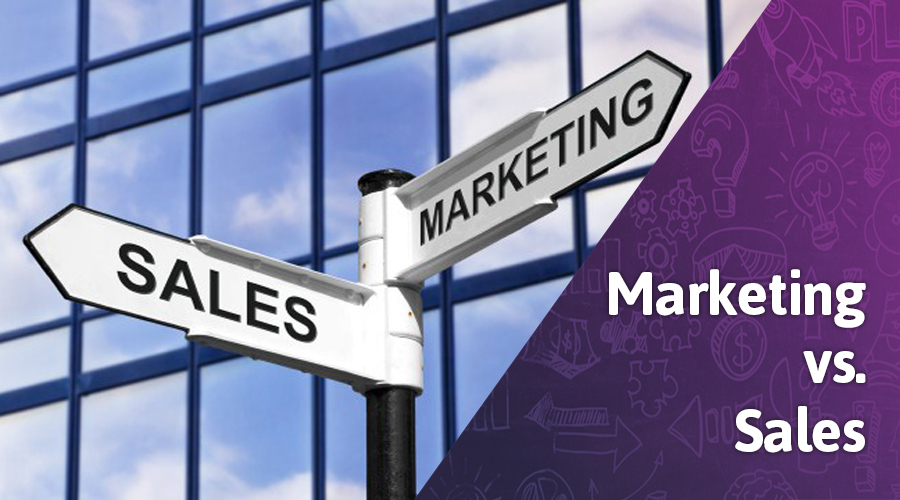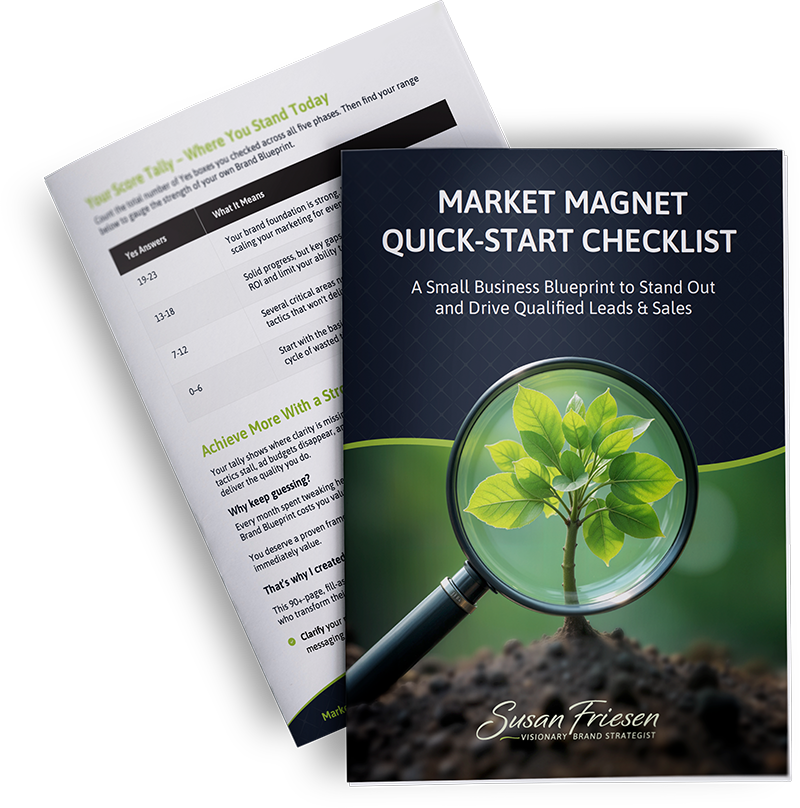Why You Can’t Measure Your Marketing Results with Sales Metrics
Many business owners seem confused as to the difference between marketing and sales. Both activities are important but serve different roles.
Are you putting all your eggs in one basket?
Or are you creating a healthy mix of marketing and sales activities that build relationships with prospects while effectively driving sales?
Let me explain the difference between the two…
The Marketing Function
The purpose of marketing is to build visibility and relationships with potential customers.
Marketing activities include activities like blogging, social media, webinars, and newsletters (and even off-line activities like networking, holding workshops and being a guest speaker.) The goal is to keep regular and consistent contact with potential buyers, which allows you to stay top of mind for when they are ready to buy.
The Sales Function
Sales activities on the other hand are designed to directly elicit a sale.
For instance you may write an email marketing campaign that directly guides the audience to a buying decision. An example of this is buying a Facebook boosted post or Google Adwords advertising that takes leads directly to a sales page.
Other sales tactics would be:
- Offering a free consultation during which you educate your leads on the paid services you offer and upsell them of those.
- Having a well-written, compelling sales page on your website for a product or service.
- Making follow-up phone calls to people who attended a free webinar or live event to upsell them to your paid services.
Avoid Confusing the Two As The Same Thing
Sometimes I see business owners be frustrated with why their marketing is not driving sales.
The biggest distinction to make is that “marketing” is responsible for the visibility of your offering and “sales” is responsible for actually selling it.
When measuring the success of each of these two distinctions, it is critical to understand what needs to be checked and tweaked to get ideal results.
In marketing, one item to look at is the calls to action that you are using in your marketing efforts.
For instance if your social media campaigns are using promotional posts to drive traffic to your website, increase newsletter subscribers, gain more Facebook Likes, or get more LinkedIn connections, then measuring the increase in those terms would be a relevant measurement of your success.
On the other hand, if you are looking to drive sales with your efforts, then be sure that the calls to action for your campaigns are designed to do that. For example, offer a featured product with a discount or a free consultation for your services.
Plus, once someone buys a lower-end product, you can provide incentives to enroll them in your higher ticket programs.
So try sprinkling your promotional posts with direct calls to action that have compelling offers like discounts, bonuses and upsells. Those are actions that will drive sales.
When it comes to social media, it’s very important to not focus all the time on the sales tactic.
The general rule of thumb is to follow the 80-20 rule where 80% of your posts should be in the spirit of giving and sharing – this develops not only the building of relationships (and therefore fans) but also your credibility as an expert in your industry. Then 20% of your posts can be sales related – this way your followers won’t mind being “sold” to if they are getting a lot of value from you in between.
If you try to just follow the “sales” tactic, you will turn off your followers and they will unsubscribe from receiving your posts, blogs or newsletters… essentially losing that potential raving fan from ever buying from you.
And Just because you send them there, doesn’t mean they’ll buy…
Finally, while it’s easy to drive traffic to a website, that doesn’t always mean they will buy.
Many people falsely believe that search engine optimization (SEO) will directly drive sales. You can lead a visitor to a website, but you can’t ensure that he will buy.
If you are not getting an effective sales conversion, it may be time to review your website to see how you can make it more effective.
Do a quick site analysis:
- Is the navigation simple?
- Do you take orders on a secure server?
- Are you capturing lead information so you can follow up with new visitors and build a rapport that leads to future sales?
- Do you have a thank you page with additional offers (or at minimum an invitation to connect with you on social media)?
- Do you have an exit page that gives a special offer to people who abandon your shopping cart? Or have a follow-up email system in place asking those that did abandon if they need any assistance?
If your website is not getting the sales conversions you want, it may be the weak link in your sales chain.
Creating the right balance of sales and marketing is the key to driving sales.
You need to establish a market presence that creates awareness of what you do, then present yourself as a reliable provider of information and solutions. Once you build that know, like, and trust factor with your followers, then they are ready to buy from your sales tactics.
With the perfect marriage of sales, marketing, and an effective website, you’ll drive more sales and get the results you are looking for.
After reading this article, are there any areas that you could improve in that will help boost your sales? Share below what comes to mind!
To your business success,
Susan Friesen
P.S. If you liked the article, you might want to subscribe to our newsletter. We publish tons of valuable content to help you learn more about marketing, and subscribing is the best way to ensure you don’t miss out. Additionally, if you’d like to learn more about building a search engine optimized website, click here for our free website guide.







